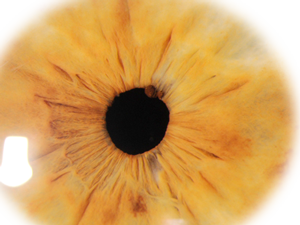The function returns the final Image object containing all the images side by side. The outputs from the calls to .getbands() confirm that there are three bands in the RGB image, four bands in the CMYK image, and one band in the grayscale image. The argument determines the factor by which you scale the image down. If you prefer to set a maximum size rather than a scaling factor, then you can use .thumbnail().
- The outputs from the calls to .getbands() confirm that there are three bands in the RGB image, four bands in the CMYK image, and one band in the grayscale image.
- In a binary image, this means that a pixel will have the value of zero if any of its neighboring pixels are zero.
- Convert an image to double-precision (64-bit) floating point format,with values in [0, 1].
- An image is a visual representation of data, typically stored in digital format.
- It’s also possible for an algorithm to detect edges automatically using edge detection kernels.
Centroid (Center of blob) detection
This corresponds to the established concept of chromosome territoriality (for review [49]). In cooltools, cis and total coverage profiles are calculated by iterating over chunks of pixels followed by summation. One computer vision libraries usage of this feature was to determine that dot anchors in yeast meiotic Hi-C maps had higher proportions of cis contacts [20]. Snippets, or regions around called dots, are extracted from the genome-wide map.
Step 3: Read the Image with OpenCV
The Python API in cooltools yields interpretable and structured outputs (Pandas dataframes or NumPy arrays), facilitating both data exploration as well as future tool development. Chromosome conformation capture technologies are powerful tools for experimentally characterizing higher-order genome organization [1]. In the resize method, you can either specify the values of x and y axis or the number of rows and columns which tells the size of the image.
Image Processing with OpenCV
With Pillow, you can carry out many processes in image processing like point operations, filtering, and manipulating. Modules that are related to each other are mainly put in the same package. When a module from an external package is required in a program, that package can be imported and its modules can be put to use. At small genomic distances (~2 Mb and shorter), mammalian interphase contact maps display square-like features along the diagonal. These 2D features, also referred to as domains, or TADs, are often summarized with 1D profiles of insulation. Insulation profiles quantify the frequency of contacts across each genomic bin averaged over a sliding diamond-shaped window.
Scikit-Image is partly written in Cython, which is a programming language that is a superset of Python. The image processing library provides access to over 2,500 state-of-the-art and classic algorithms. Users can use OpenCV to perform several specific tasks like removing red eyes and following eye movements.
The .BoxBlur() filter is similar to the one described in the previous section introducing convolution kernels. In the earlier section discussing kernels, the box blur filter that you used was a 3×3 filter. This means that it had a radius of 1, because the filter extends by one pixel from the center. The format of an image shows what type of image you’re dealing with.
In this tutorial, you will learn how you can process images in Python using the OpenCV library. Gaussian blur is a common technique in image processing that is often carried out by the post-processing firmware on your digital camera, whether it’s a dedicated digital camera or a smartphone. Image processing in Python is a rapidly growing field with a wide range of applications. It is used in a variety of industries, including Computer vision, medical imaging, security, etc.
This includes considering the average pairwise preferences over a reduced set of four histone modification states [29]. Saddle plots have also been used to quantify contact preferences relative to the nuclear lamina and speckles [33], as well as differences https://forexhero.info/ between experimental protocols [34]. Cooltools is open-source and structured to encourage future contributions. For experimental code, cooltools provides a sandbox to enable easy sharing, safe testing, and eventual adoption of novel analysis routines.
The Python Imaging Library adds image processing capabilities to yourPython interpreter. Specify the size in the second argument and RGB colors in the third argument. However, you’d like to have an image in which all the pixels that correspond to the cat are white and all other pixels are black. In this image, you still have black regions in the area which corresponds to the cat, such as where the eyes, nose and mouth are, and you also still have white pixels elsewhere in the image.
Multiprocessing can be specified to speed up snipping for large sets of anchors. Python provides one of the most popular environments for flexible data analysis and software development. This is in part due to the rich ecosystem of numpy [4], scipy [5], scikit-learn [6], and pandas [7]. For Hi-C analysis in Python, the widely-adopted cooler [8] format and library present an ideal foundation. Cooler handles storage and access for high-resolution datasets via a sparse data model. To fully leverage the advantages of cooler, however, requires a corresponding analysis framework in Python.
You create an array of size 600×600 containing zeros everywhere. Next, you set the value of a set of pixels at the center of the array to 255. Pillow has an extensive selection of built-in functions and filters. However, there are times when you need to go further and manipulate images beyond the features that are already available in Pillow. You can achieve dilation by using ImageFilter.MaxFilter(3), which converts a pixel to white if any of its neighbors are white.
Now that you’ve installed the package, you’re ready to start familiarizing yourself with the Python Pillow library and perform basic manipulations of images. Pillow and its predecessor, PIL, are the original Python libraries for dealing with images. Even though there are other Python libraries for image processing, Pillow remains an important tool for understanding and dealing with images. According to IDC, digital data will skyrocket up to 175 zettabytes, and the huge part of this data is images. Data scientists need to (pre) process these images before feeding them into any machine learning models. They have to do the important (and sometimes dirty) work before the fun part begins.

